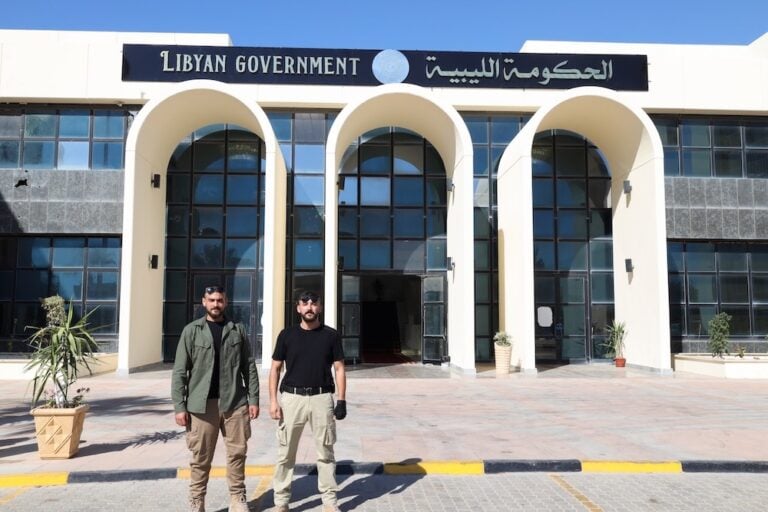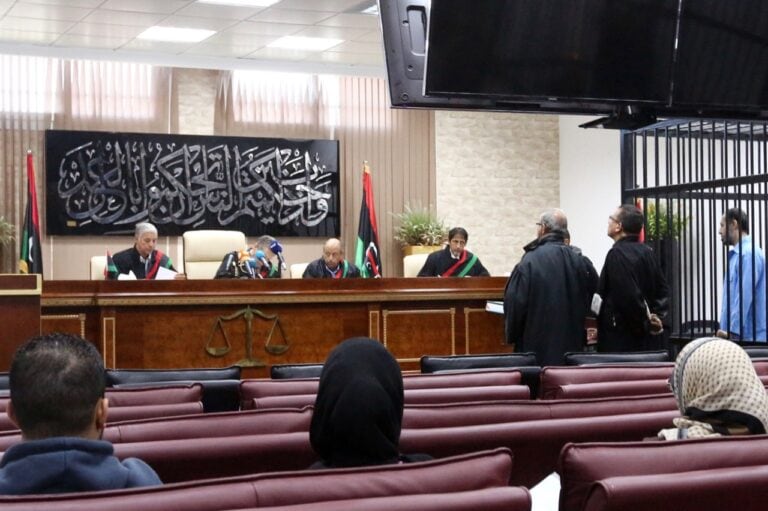(EOHR/IFEX) – The following is a 25 June 2006 EOHR press release: One year after Libya’s Al-Ghazal: Impunity in effect More than a year after the abduction and murder of Libyan journalist Daif Al-Ghazal, Libyan and international free expression and human rights groups voice concern and dismay at the continued secrecy and impunity under which […]
(EOHR/IFEX) – The following is a 25 June 2006 EOHR press release:
One year after Libya’s Al-Ghazal: Impunity in effect
More than a year after the abduction and murder of Libyan journalist Daif Al-Ghazal, Libyan and international free expression and human rights groups voice concern and dismay at the continued secrecy and impunity under which the crime remains unsolved.
Al-Ghazal, a journalist and former member of the elite Revolutionary Committee Movement (RCM), was abducted on 21 May 2005, in Benghazi, while on his way home with Mohammed Al-Mirghani, a friend. His family was informed that an “unknown body” was found on 2 June 2005, when they were called in to identify his disfigured remains.
His family claimed the body even though they could not recognise him at first as a result of the body’s decomposition and the signs of torture. Al-Ghazal’s hands were cuffed and a bullet in the head had caused him severe brain damage and internal bleeding, according to the autopsy report obtained by the United Kingdom-based Libya Human Rights Solidarity (LHRS). The whereabouts of Al-Mirghani remain unknown according to Libyan human rights defenders.
LHRS and Libya Watch for Human Rights (LWHR) accused the autopsy report of omitting critical details that could have led to a clearer understanding of the nature and identity of the perpetrators. These details included the type of weapon used, the distance from which it was fired and the torture techniques employed. They did however consider the autopsy report a “preliminary positive step by the government in accepting that Daif Al-Ghazal was murdered unlawfully” which will “enable his family to seek information about the crime.”
Al-Ghazal had been a leading member of the RCM, the elite movement that guided the regime’s efforts to advocate for and spread the ideological background on which the “Green Book” is based and for which the 1969 revolution stands. Al-Ghazal worked as a journalist and was appointed as the editor-in-chief of “Al Zahf Al Akhdar,” the official newspaper of the RCM, in the Benghazi office.
However, differences between Al-Ghazal and RCM leaders surfaced in 2000. These differences were highlighted in Al-Ghazal’s articles and op-ed pieces in which he criticised RCM policies and accused revolutionaries of “slaughtering each other.”
His articles appeared both in “Al Zahf Al Akhdar” and on web-based newspapers, increasingly vocal and popular in Libya. Amongst online websites publishing Al-Ghazal’s most critical articles were “Libya Al-Youm” and “Libya Jeel”, both based in the United Kingdom.
Accusing the regime of oppression and criticising the RCM were the two main reasons Al-Ghazal was called to the office of communication for interrogation by the RCM weeks before his abduction.
Despite the fact that several key figures in the Libyan regime have promised to reveal the circumstances of the murder, Libyan rights groups have often voiced concern that the breakthrough in Libyan foreign policy aimed at easing tensions with the west has been one of the main reasons the government maintained the ability to downplay the crime and refrain from bringing the perpetrators to justice.
Amongst those who adopted the case and promised to bring about justice was Saif Al-Islam, Colonel Mu’amar Al-Gaddafi’s son and the head of the Gaddafi Institute for Development.
Libyan and international rights groups have often voiced concern about the systematic, legalised and even celebrated free expression violations of the Libyan regime. In its paper addressing the 58th session of the UNCHR, the International Federation for Human Rights (FIDH) voiced its concern, and the concern of its Libyan partners, over Libya’s legal framework restricting free expression.
Amongst the legal frameworks often criticised in Libya are the so-called “Protection of the Revolution” laws of 1971 and 1972 which impose stringent restrictions on free expression and other basic human rights. These restrictions include criminalising “any exercise of the right to freedom of assembly or expression, such as strikes or sit-ins” and sentencing the perpetrators to death.
Protecting the revolution from “enemies of the people” has been the Libyan regime’s motive. According to FIDH, the Libyan regime not only took pride claiming responsibility for these crimes but often rewarded and patronised the perpetrators until the “physical elimination of the peoples’ enemies” was brought to a halt in 1996.
In its letter addressing the UN High Commissioner for Human Rights, the Europe-based Libyan League for Human Rights (LLHR) expressed dismay at the fact that Al-Ghazal’s murderers enjoy impunity. LLHR is alarmed that “individuals continue to be killed for having sought to peacefully express their right to freedom of opinion and expression” – a reference to the death of 19 Libyan activists and the arrest of many others on 17 February 2006, while taking part in an authorised peaceful demonstration in Benghazi.
Despite the release of some 130 prisoners of conscience in March 2006, Libyan prisons still house about 500 more, excluding those arrested in February, according to Libyan rights groups, while Al-Ghazal’s murder remains to be dealt with in secrecy, if at all. This reflects the lack of genuine desire of the Libyan government to bring about human rights and a culture of freedom in the country.
For more information please visit:
1. Libya Watch for Human Rights: http://www.libya-watch.org/
2. Libya Human Rights Solidarity: http://www.lhrs.ch
3. International Federation for Human Rights: http://www.fidh.org
4. Libya Today (Libya Al-Youm): http://www.libya-alyoum.com/
5. Libya Jeel: http://www.libyajeel.com/
For IFEX members’ alerts on Libya please visit:
1. May 4, 2006: http://ifex.org/en/content/view/full/74197/
2. March 6, 2006: http://ifex.org/en/content/view/full/72637/
3. January 25, 2006: http://ifex.org/en/content/view/full/71830/
4. June 8, 2005: http://ifex.org/en/content/view/full/67198
5. June 6, 2005: http://ifex.org/en/content/view/full/67126


